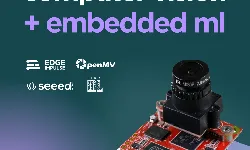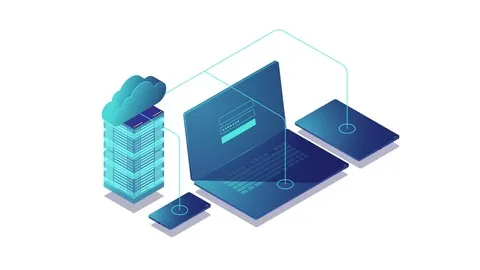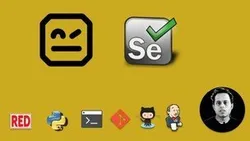
Introduction to TDD in C# 
This course introduces participants to Test Driven Development (TDD) in C#, teaching the fundamentals of making code testable, robust and maintainable. Through hands-on exercises, participants will gain the skills to improve their unit testing. ▼
ADVERTISEMENT
Course Feature
![]() Cost:
Cost:
Free
![]() Provider:
Provider:
Udemy
![]() Certificate:
Certificate:
Paid Certification
![]() Language:
Language:
English
![]() Start Date:
Start Date:
On-Demand
Course Overview
❗The content presented here is sourced directly from Udemy platform. For comprehensive course details, including enrollment information, simply click on the 'Go to class' link on our website.
Updated in [March 06th, 2023]
Learn test driven development: make code testable, robust and maintainable. Bring unit testing skills to the next level.
What you'll learn:
Practice TDD in your daily job
Today unit testing is the absolutely required skill which is required from any professional developer. Companies expect from developers to know how to write unit tests including all the most important topics such as mocking and
test driven development
(
TDD
in short).
This course is all about practicing
TDD
using C# programming language and
NUnit
as a unit testing framework. Along the way, we will learn the concepts related to unit testing. This course does not cover all the features of
NUnit
. This course is way more interesting.
Learning
unit testing
and
TDD
puts a powerful and very useful tool at your fingertips. Being familiar with unit testing and
TDD
you can write reliable and maintainable applications. It is very hard to lead a project which is not covered by unit tests.
Content and Overview
This course is primarily aimed at developers who're already familiar with the basics of unit testing and dependency injection. Some experience in C# programming is required.
Theory is dead without practice, so starting from the second section, you'll see tons of programming sessions where I'll demonstrate how to implement generating of Fibonacci numbers, FizzBuzz, parsing of roman numerals, updateable spin synchronization primitives, tic-tac-toe or crosses and noughts game and game in sticks. You'll also learn:
How a regular agile development process looks like
That you need to learn shortcuts to practice TDD more smoothly
Three Main TDD techniques: faking, triangulation and obvious implementation
Which tests to write first
How to start writing a test in a TDD manner
Here is my Teaching Approach -
No fluff, no ranting, no beating the air. I respect your time. The course material is succinct, yet comprehensive. All important concepts are covered. Particularly important topics are covered in-depth. For absolute beginners, I offer my help on Skype absolutely free,if requested.
Take this course, and you will be satisfied.
(Please note that we obtained the following content based on information that users may want to know, such as skills, applicable scenarios, future development, etc., combined with AI tools, and have been manually reviewed)
Course Overview: This course provides an introduction to Test Driven Development (TDD) in C#, teaching users how to make code testable, robust and maintainable. It covers topics such as unit testing, mocking, and TDD, as well as providing practical programming sessions to demonstrate how to implement TDD.
Possible Development Directions: After completing this course, users will have a better understanding of TDD and how to use it in their daily job. They will be able to write reliable and maintainable applications, and be familiar with the concepts related to unit testing. They will also be able to use shortcuts to practice TDD more smoothly, and be able to start writing tests in a TDD manner.
Related Learning Suggestions: To get the most out of this course, users should already be familiar with the basics of unit testing and dependency injection, as well as have some experience in C# programming. Additionally, users may want to look into other courses related to TDD, such as courses on mocking, agile development processes, and other TDD techniques.
[Applications]
After completing this course, students will be able to apply their knowledge of TDD in C# to their daily work. They will be able to write reliable and maintainable applications, and be familiar with the concepts related to unit testing and TDD. They will also be able to practice TDD using C# programming language and NUnit as a unit testing framework. Additionally, they will be able to understand the agile development process, learn shortcuts to practice TDD more smoothly, and know which tests to write first and how to start writing a test in a TDD manner.
[Career Paths]
Job Position Paths:
1. Software Developer: Software developers are responsible for designing, developing, and testing software applications. They use programming languages such as C# to create software that meets customer requirements. With the increasing demand for software applications, software developers are in high demand and the job outlook is expected to remain strong.
2. Quality Assurance Engineer: Quality assurance engineers are responsible for ensuring that software applications meet customer requirements and industry standards. They use TDD to create automated tests that can be used to verify the quality of the software. Quality assurance engineers are in high demand and the job outlook is expected to remain strong.
3. Automation Engineer: Automation engineers are responsible for designing and developing automated systems that can be used to test software applications. They use TDD to create automated tests that can be used to verify the quality of the software. Automation engineers are in high demand and the job outlook is expected to remain strong.
4. Technical Support Engineer: Technical support engineers are responsible for providing technical support to customers who are using software applications. They use TDD to create automated tests that can be used to verify the quality of the software. Technical support engineers are in high demand and the job outlook is expected to remain strong.
[Education Paths]
Recommended Degree Paths:
1. Bachelor of Science in Computer Science: This degree program provides students with a comprehensive understanding of computer science fundamentals, including programming, software engineering, and computer architecture. It also covers topics such as artificial intelligence, machine learning, and data science. This degree is ideal for those looking to pursue a career in software development, data analysis, or computer engineering. Developing trends in this field include the use of artificial intelligence and machine learning to automate tasks, as well as the use of big data to gain insights into customer behavior.
2. Master of Science in Software Engineering: This degree program focuses on the development of software applications and systems. It covers topics such as software design, software testing, software architecture, and software development processes. This degree is ideal for those looking to pursue a career in software engineering, software development, or software architecture. Developing trends in this field include the use of cloud computing, mobile development, and the Internet of Things (IoT).
3. Master of Science in Data Science: This degree program focuses on the analysis and interpretation of data. It covers topics such as data mining, machine learning, and data visualization. This degree is ideal for those looking to pursue a career in data science, data analysis, or data engineering. Developing trends in this field include the use of artificial intelligence and machine learning to automate tasks, as well as the use of big data to gain insights into customer behavior.
4. Doctor of Philosophy in Computer Science: This degree program provides students with a comprehensive understanding of computer science fundamentals, including programming, software engineering, and computer architecture. It also covers topics such as artificial intelligence, machine learning, and data science. This degree is ideal for those looking to pursue a career in research or academia. Developing trends in this field include the use of artificial intelligence and machine learning to automate tasks, as well as the use of big data to gain insights into customer behavior.
Pros & Cons

Good introduction to TDD

Detailed examples

Well explained concepts

Efficient and Responsible

Trimmed and Responsible

Good knowledge of process

No repo provided

Naive reviews

Professor's accent

Long course content

Too fast pace

Typing too quick
Course Provider

Provider Udemy's Stats at AZClass
Discussion and Reviews
0.0 (Based on 0 reviews)
Explore Similar Online Courses

Computer Vision with Embedded Machine Learning

How to Migrate Your Access Database to the Cloud With Caspio

Python for Informatics: Exploring Information

Social Network Analysis

Introduction to Systematic Review and Meta-Analysis

The Analytics Edge

DCO042 - Python For Informatics

Causal Diagrams: Draw Your Assumptions Before Your Conclusions

Whole genome sequencing of bacterial genomes - tools and applications

Boost Your Game Performance in Unity 3D

ISTQB Certified Tester Foundation Level Training (CTFL)


Start your review of Introduction to TDD in C#